Attachments
No more digging through email threads, desktop folders, and various file versions! Upload and attach all your images, videos, files, and misc. project assets in ONE place with CoSchedule attachments. Stay organized, find the right files fast, and keep your projects on track!
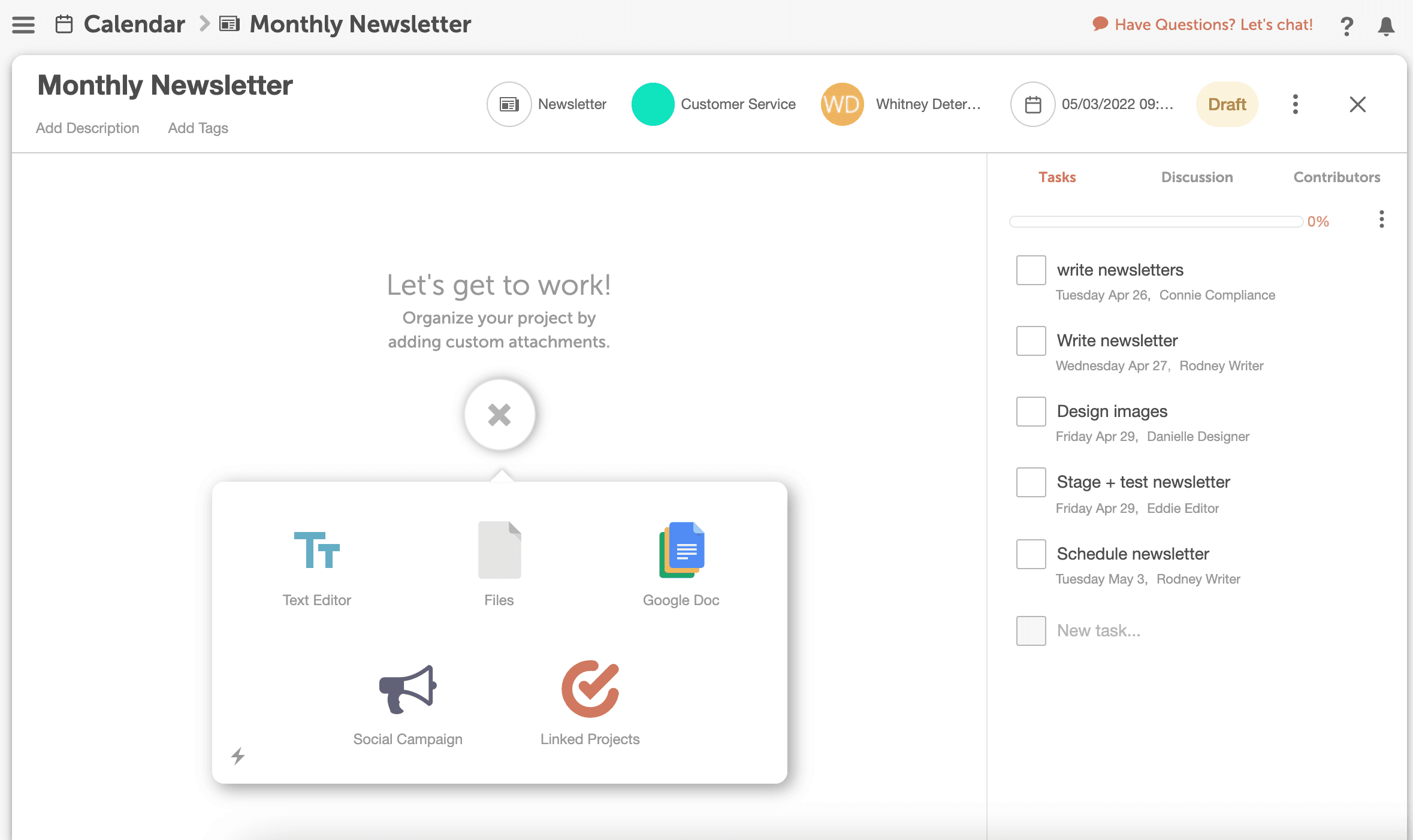
Here are a few ways teams use attachments to organize their projects.
Blog Posts
Tons of teams organize their blog posts in CoSchedule. Typically, you need at least three attachments for each post, including:
- Blog Copy: attach/share your blog copy in a WordPress post, Text Editor, Google Doc, or File (Word Document). The type of attachment will vary based on how you draft your blog content.
- Blog Images: attach image and video files you need for your blog post. This could include your header/hero image, social promotion images and video, and in-line graphics.
- Social Campaign: attach a social campaign to promote your new blog post on social media.
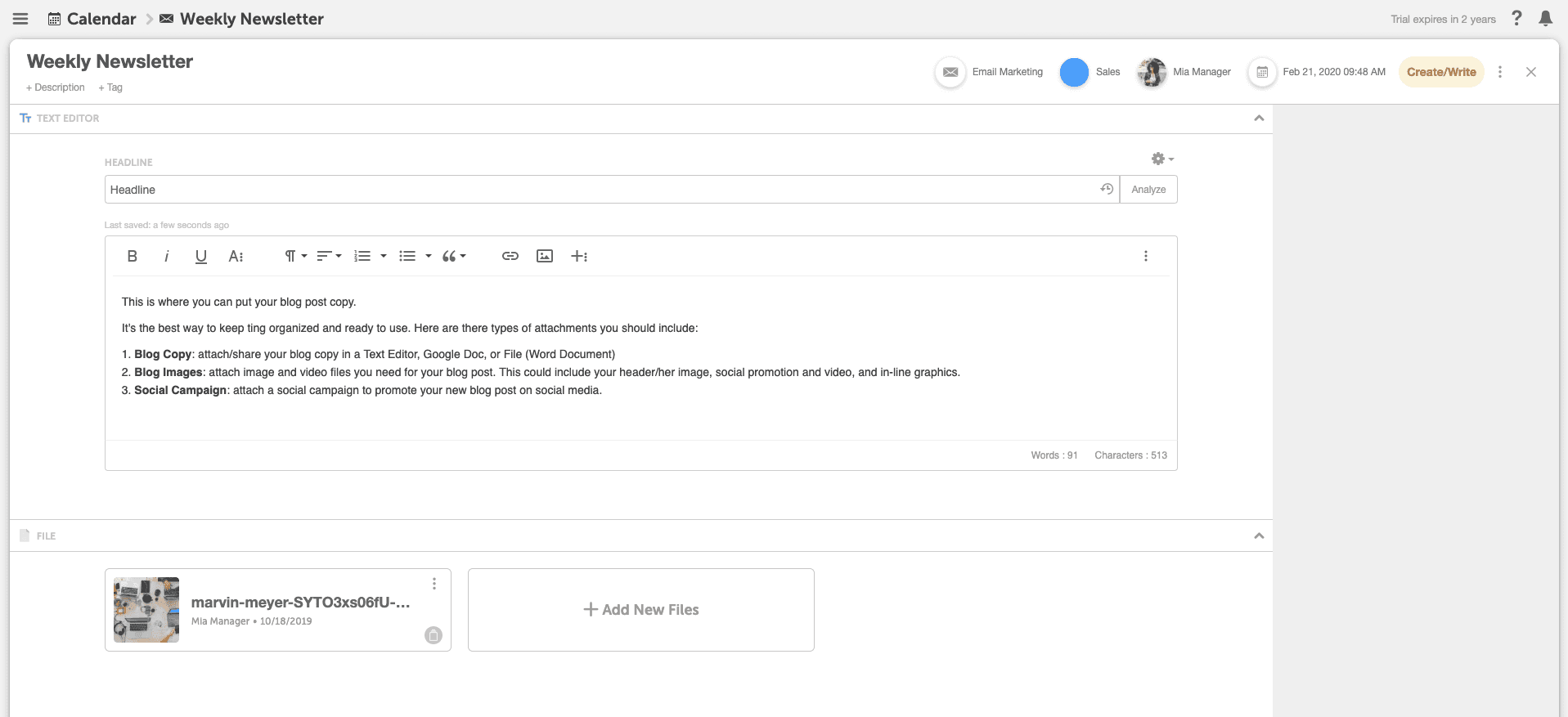
Case Studies/Customer Stories
One project that requires a lot of project attachments is a case study or customer story. You’ve got research, interviews, social promotion, and other files you need to keep organized.
Here’s a quick list of attachments you might include:
- Audio Files: attach the audio (or video) recording of your customer interview. This gives the entire team access to the discussion to help pull quotes for the landing page, download, or social messages.
- Interview Transcript: if you prefer to include an interview transcript, attach it in the text editor or upload the file so it’s accessible for the entire team.
- Case Study/Customer Story Copy: attach a text editor, Google Doc or file that includes the drafts and final copy for your landing page/PDF (or preferred medium for customer stories).
- Image Files: include image files required for design. This could include headshots, photos, graphs, featured stats, or pull quote graphics.
- Social Campaign: attach a social campaign to promote your new customer story once it goes live.
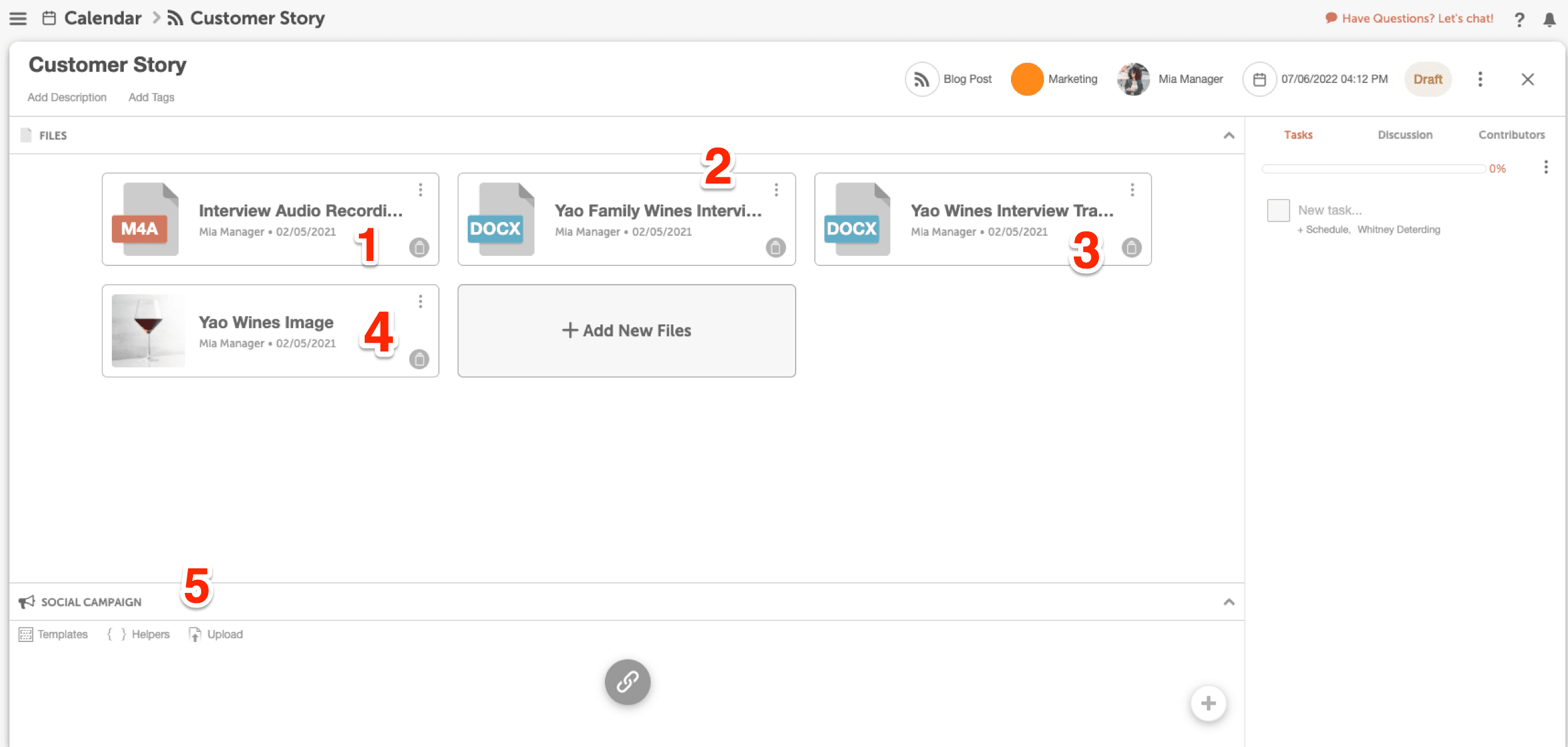
Podcast
Taking a podcast from idea to iTunes requires a lot of files, including:
- Audio Files: this includes the podcast recording, intro audio, mid show ads, and wrap up. These often get edited together into the final audio recording – which you’ll also want to attach to your project.
- Image Files: you’ll need a podcast graphic, social promotion graphics, and a variety of other images required to publish and promote your new episode.
- Misc. Files: this includes your show notes, episode description, show transcript and other helpful files you need before your can publish your podcast. These can be uploaded as a Google Doc, Text Editor, or file.
- Social Campaign: Last but not least, you’ll want to promote your podcast once it goes live. Add a social campaign to share your latest episode with your audience.
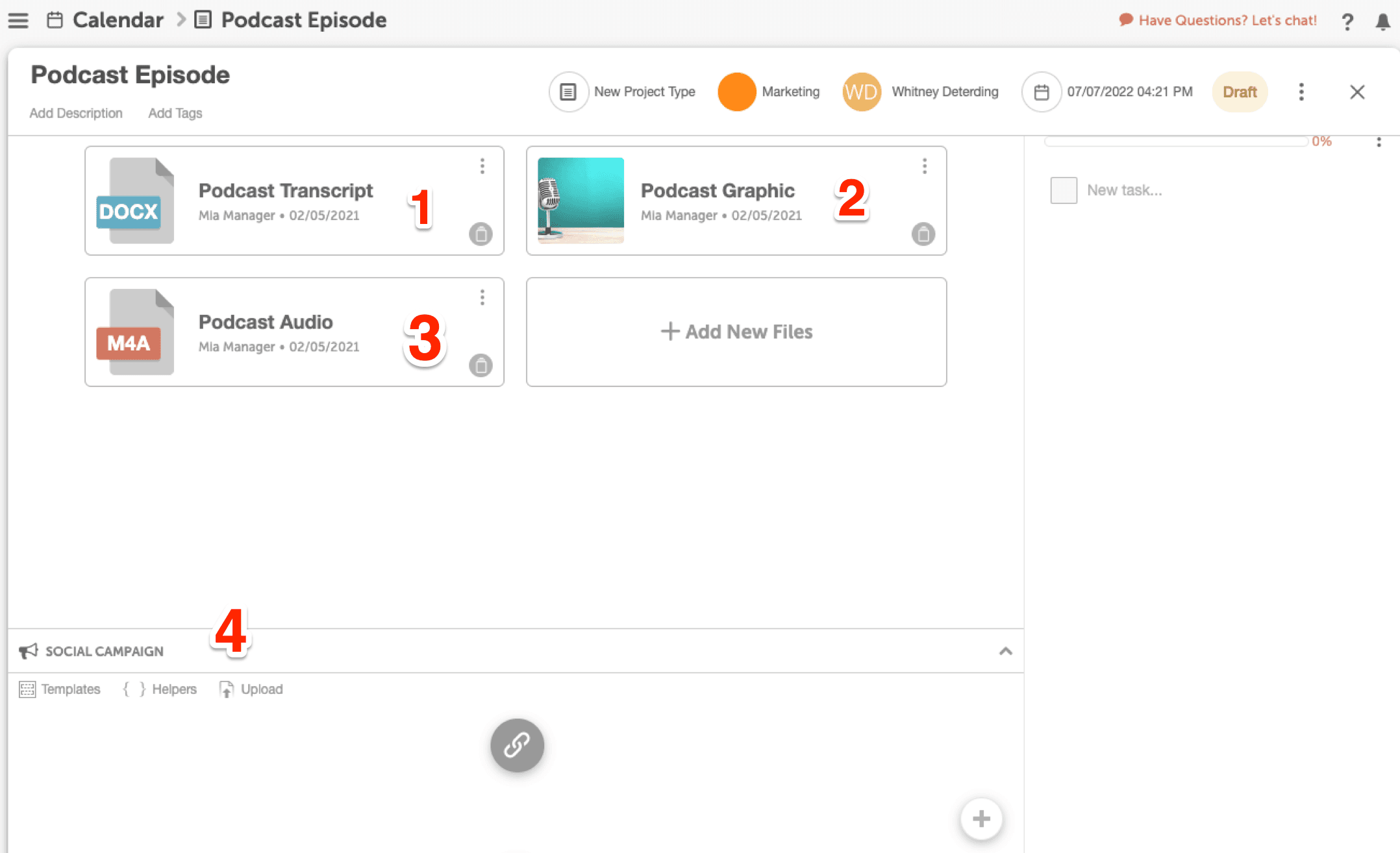
Of course, your podcast process might include fewer (or more) attachments. Add them as you need them to get your podcast live and into your prospects’ earbuds.
Linked Projects
The most unique project type in your attachment picker is Linked Projects. Instead of uploading or attaching content or files, this connects related projects in CoSchedule together.
Linked projects make it easy to jump from one project to the next – without having to search your calendar. ?
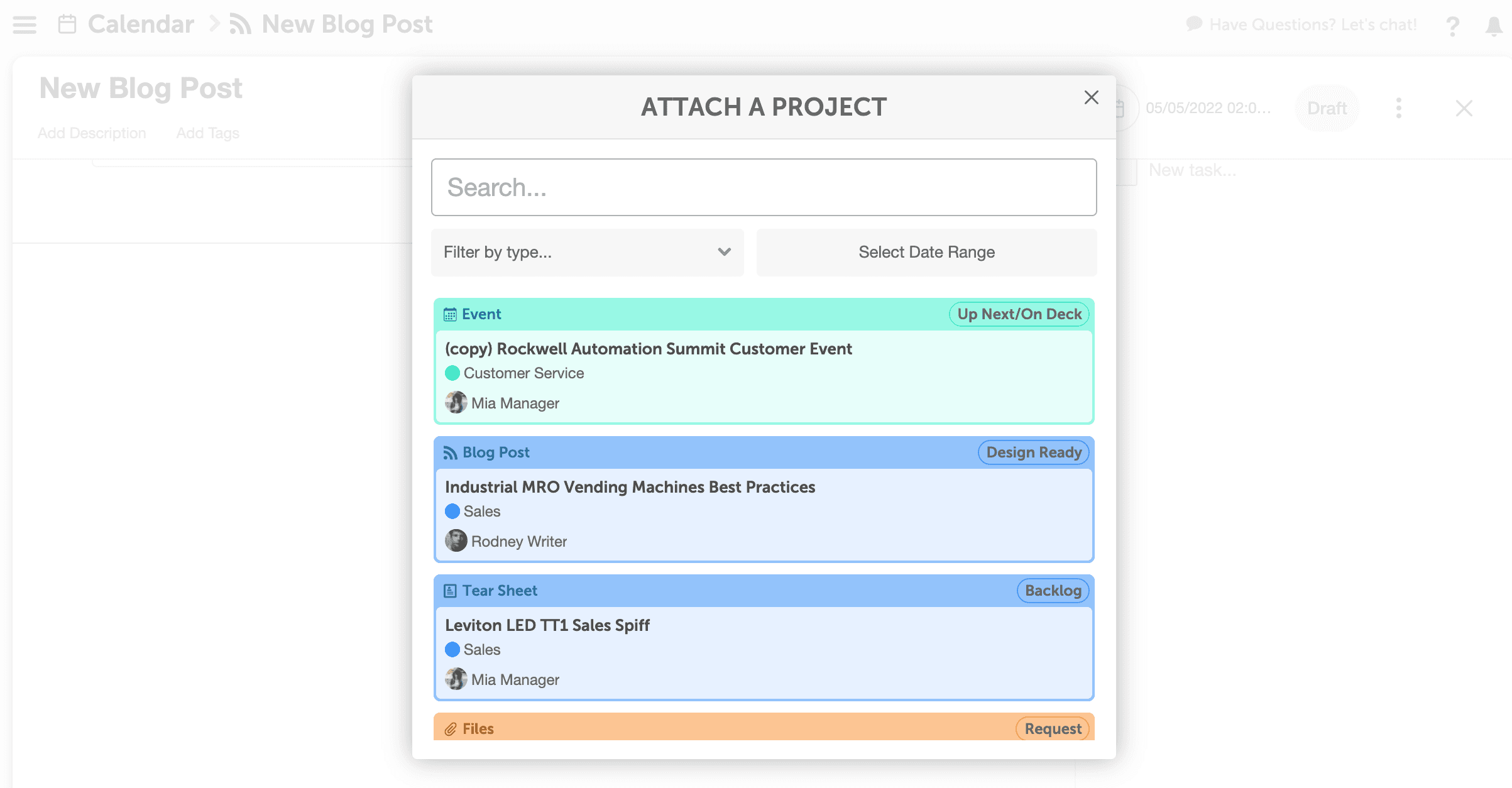
Teams are using linked projects in two ways – to link related projects together to form a “mini-campaign” and to create personalized project lists.
Related Projects
Sometimes you don’t need to build out a full-scale marketing campaign. Create “mini-campaigns” to quickly reference related projects.
It works great for working on multi-email announcements.
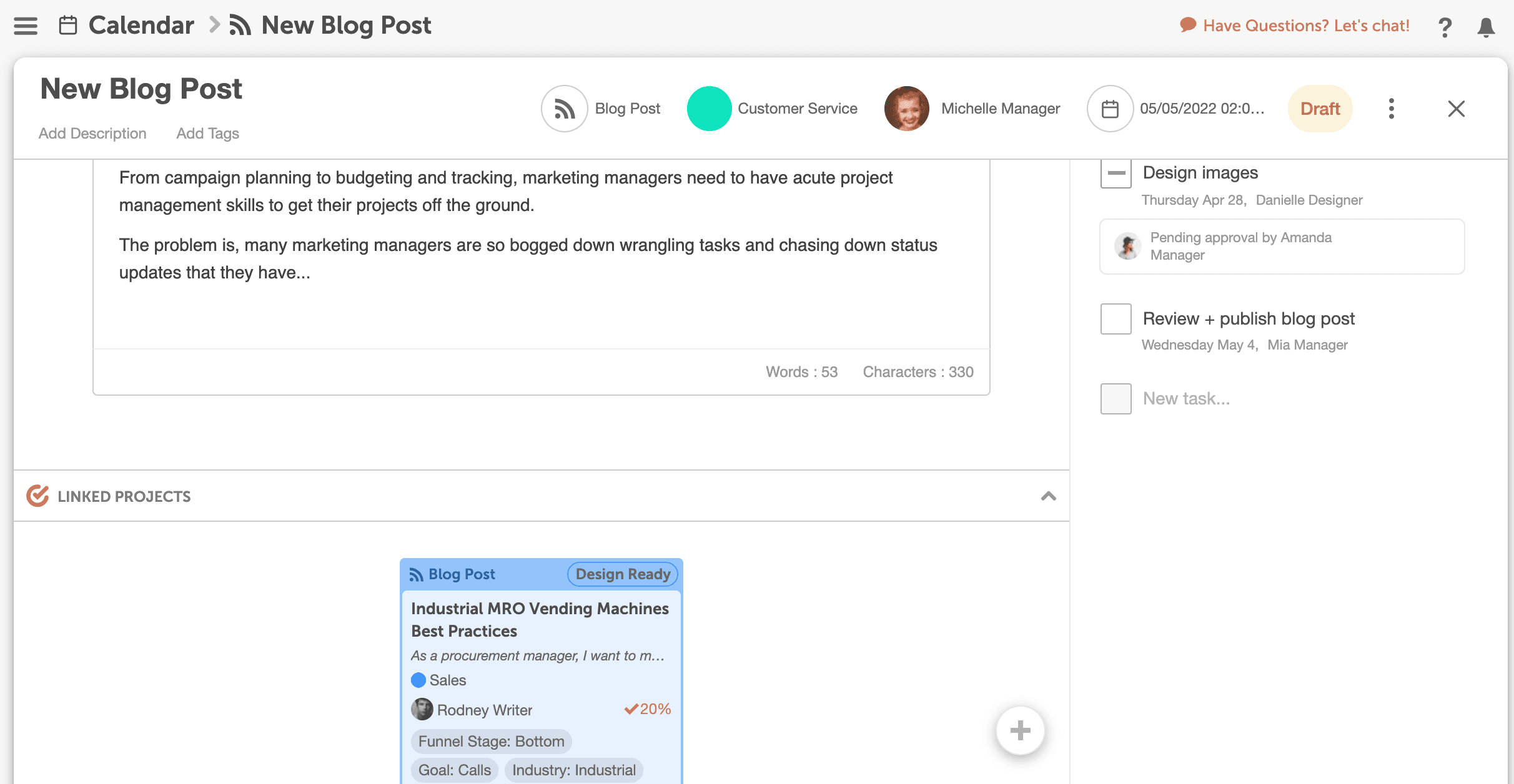
So you can find (and update) the projects you’re looking for – when you need them quickly.
What are you waiting for? Add attachments to your next project to get organized.
Need a little extra help? Learn more about project attachments.